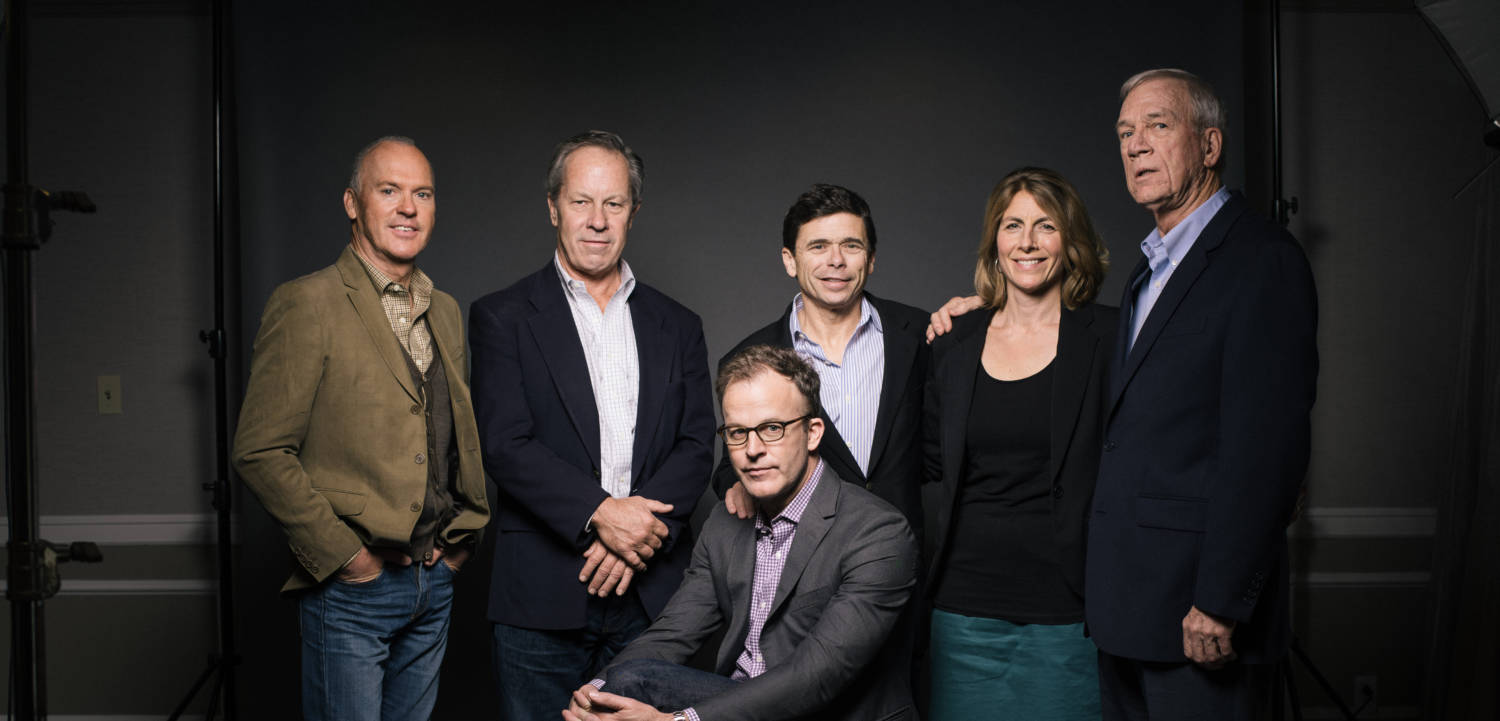If this week is any indicator, newspapers are in for a rough ride.
On Wednesday, The New York Times reported that print ad dollars were down 19 percent compared to the same time last year.
The Times isn’t alone. Gannett, McClatchy and Tronc all reported declining print income over the last few days as business continues to shift to giants like Facebook and Google.
Meanwhile, The Wall Street Journal, The Guardian, The New York Times and Gannett are all making moves to cut staff.
That climate is bad news for investigative journalism, deep digging that generally requires lots of time from savvy reporters and editors in newsrooms scattered throughout the country. As journalism jobs disappear across the United States — and communities go unserved — will news organizations continue to make time for the kind of high-impact reporting that makes a difference?
To answer that question, Poynter interviewed two people with years of experience practicing, editing and teaching investigative journalism.
Late last month, Mark Horvit stepped down as executive director of Investigative Reporters and Editors, the nonprofit at the University of Missouri that advocates for and teaches in-depth reporting. Before arriving at IRE, he was a reporter and special projects editor at the Fort Worth Star-Telegram.
His successor, Doug Haddix, is also a former investigative journalist, having served as the projects editor at The Columbus Dispatch before becoming a training director at IRE.
Here’s what they had to say:
Mark, let’s start with you. Why did you step aside at IRE now?
Horvit: I really liked what I was doing, it’s just that after about nine years, it was time for me to do something else and time for the organization to have some new blood.
What happened to investigative journalism during your time at IRE, and what’s happening now?
Mark: Basically, I came into IRE at a pretty bad time for the industry and for investigative reporting. They hired me in 2007, and I started in January of 2008 when everybody was still cutting and things weren’t going well and investigative teams were being disbanded — including the one that I ran not long after I left.
It was a pretty rough time — all of IRE’s numbers were going down, as far as membership and attendance and everything else. It was a reflection of what was happening in the industry.
And it was fairly disconcerting there, for a couple of years. But at IRE, we decided that content is always going to matter. Some people were talking about teaching people how to blog.
But I didn’t think so. I thought we needed to double down on teaching people how to find information, how to dig for information. Because newsrooms were losing most of their experienced reporters to buyouts and layoffs, the need for getting new reporters up to speed on how to do this kind of work was greater.
So we stuck with that plan, and it worked pretty well for the organization. I think that’s also because the industry really started to come around to the same idea. Around 2010, there was a collective understanding in the industry that they’d cut too much.
…And really, from that time on, we’ve seen a real rebirth in investigative reporting, but not the same way that it was looked at before. We focus a lot on doing quick-hit investigative stuff — the idea of bringing up everyone’s game in the newsroom. That way, beat reporters know how to dig and know how to mine and find stories. A lot of the best investigative work in newspapers and TV stations was always done by beat reporters, not just by investigative teams.
It’s certainly unfortunate when you have fewer organizations that can really dive deep and invest resources in big projects. And some of that’s coming back. But that’s one of the things that’s still lost in a number of places.
Doug, what do you think is going on with investigative journalism right now?
Haddix: I think the biggest challenge I see going forward is in the smaller markets. If you’re at The New York Times or The Washington Post or a national broadcast network, you still have pretty decent resources devoted to investigative journalism.
In markets like Columbus, Ohio and Indianapolis and Louisville and Kansas City and St. Louis, a lot of the investigative firepower has been lost just because of the staff cuts.
So that, to me, is an area where I’d like to see how IRE can help in those smaller markets. Because politicians and businesses are getting away with all kinds of things because in many cases, there aren’t as many watchdogs and they’re not watching as closely as they were able to before.
We’re in the midst of a rough patch for newspapers, and these slumps tend to come with a decline in the ambition of investigative reporting. Do you see this stretching on? And if so, do you think we’re in a tight spot in terms of the future of investigative journalism?
Horvit: People have been asking me that question since I took the job. I spent a lot of the first two years talking about almost nothing but that, understandably. But it never really stopped. I really do believe — and I’m not trying to be a Pollyanna, because I don’t have to anymore — I believe now the same thing I believed when things looked way worse than this, even in 2008 and 2009, which is: No, I think you’re going to see things come and go.
I really do believe, though, that there were some lessons learned in how news organizations reacted the last time things got really tight. And I’d like to think that there will be more thought given to how you reduce staff if you have to and how you deal with leaner times. It still preserves an organization’s ability to do good digging and to strategically know where it makes more sense to deploy resources.
Because that really is one of the best ways a news organization can hold onto audience in lean times — be the place where people go for stuff they have to know. That’s all we have left as a news industry.
Haddix: You don’t need 500 people in your newsroom to do really amazing work. It’s a mindset change in terms of knowing how to identify the story, how to use documents, how to use shoe leather reporting, how to engage with your audience in new ways to get information.
I think what you’re seeing with — let’s use David Fahrenthold at The Washington Post as an example — his coverage of the Trump Foundation is getting a lot of attention around the country. And he is doing really fantastic, shoe-leather reporting. He’s using IRS 990 documents. He’s calling hundreds of foundations and hundreds of charities to see if the Trump Foundation actually contributed money to those places. He’s holding people accountable.
And that shows the power of one smart person who knows how to use the tools and is persistent and doesn’t let go. Our job is to create more David Fahrentholds around the country, equipping people with the tools, with the knowledge, with the strategy to dig into the stories.
What keeps you up at night when you look at the future of investigative journalism?
Horvit: It’s so obvious that I hate to say it. But the question is, how are we going to be able to pay — not for investigative reporting, but for quality journalism, period?
I think what we’re talking about is good, quality journalism. And that’s a broader issue than just investigative reporting. My new role here at the university is to build up statehouse reporting with students at Missouri. And one of the reasons is, in many states like Missouri, statehouse coverage got cut way, way back when news organizations were retrenching. So whether it’s investigative reporting or just having good journalists who know what to look for at the statehouse, the lack of that is a huge problem. It probably doesn’t get lumped in with investigative reporting, but it should.
I think the real concern that everybody has is that after a number of years, we still haven’t figured out how to transition from the old business model to the new one. And that’s a significant problem for all of journalism, not just investigative journalism.
Haddix: This doesn’t keep me up at night, but I just hope that journalism keeps attracting the right kind of reporters. People who are really passionate, curious and really committed to really fighting through those obstacles. It’s a scary time for a lot of people to think about going into journalism. But I’m amazed and impressed by the students that I’ve encountered over the last several years who are committed to getting into journalism for the same reason that Mark and I got into journalism: To make a difference.
Despite the business model, despite the economic concerns, I still think there are ways to make a difference and be productive as journalists in this climate.
We’re seeing more and more collaboration among investigative journalists nowadays, notably this year with the Panama Papers investigation. Why do you think that is?
Horvit: Collaboration like this wasn’t happening much 15 or 20 years ago because news organizations didn’t have to. When you had a big staff, the whole idea of competition was different The whole idea that you could handle things yourself was different. And as news organizations have lost resources, there’s literally a need to work with other news organizations to continue to produce the same kind of work that we’ll continue to do. The excellent outcome of that is, a lot of the walls and barriers that used to stop organizations from working together have dropped and as a result, you’re seeing amazing work being done. The Panama Papers is an high-profile example. But there’s lots of great, great collaborative work that happens all the time.
I don’t think an organization like ProPublica would be able to have the same success it had now 15 or 20 years ago. Because a lot of the big organizations that work with them probably wouldn’t have because they wouldn’t’ve felt the need. Now they do feel the need.
This conversation has been edited for clarity.






